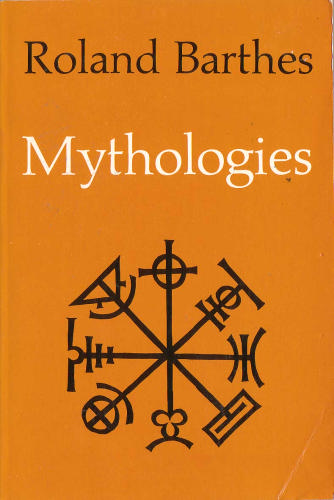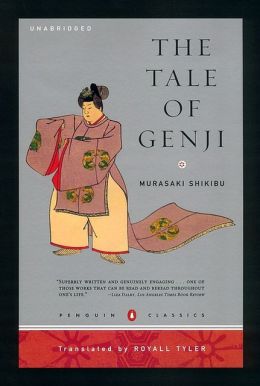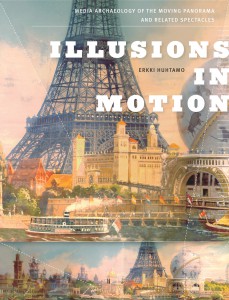Say goodbye to your last week of freedom—next week students and professors head back to college. We miss drooling over the books we used to buy at the beginning of the semester, so we asked several friends of AFC to share us in on their personal favorites from their fall syllabi. From the list of options below, it looks like we’ll have plenty to read.
Daniel Gerwin, Senior Lecturer, The University of the Arts, Philadelphia
“I assign the first chapter of Claire Bishop’s Artificial Hells: Participatory Art and the Politics of Spectatorship. I think Bishop offers the best critique of social practice art, and it’s a critique that anyone interested in this kind of work would be wise to consider seriously.”
Sharon Louden, New York Academy of Art
While I will shamelessly plug my book as the very best book for every student to read (LOL!), objectively, I always recommend these “bibles” for every student (which I think is a three-part-set as I see these books as one, because they are all edited by the same people, the writings feel continuous from book-to-book, going from Modern to Contemporary):
Theories of Modern Art (Chipp/Selz), Theories and Documents of Contemporary Art (Stiles/Seltz) and the newest volume of Theories and Documents of Contemporary Art (Stiles/Selz)
I recommend these books (and often require them) to every student because I have found to read other artists talk about their ideas and their work is of comfort in the studio, of inspiration and certainly of great information. The writings are diverse, often historic and generally thoughtful. Reading other artists’ words in these volumes always reminds me that there is a community of artists of all sorts—there are working artists out there with vast ideas and ways of approaching how they make their work. I love having these books as resources. They never get old.
Nicholas O’Brien, Pratt Institute
I’ve always really liked assigning “Toys” in Mythologies by Roland Barthes as I think it gets younger students to start thinking about the tools they’re using and how they can condition behavior. There are also some lovely parallels to be drawn between Barthes’ critique of craft and the handmade, and the ways in which younger internet-based producers are used to having things be pre-made. In other words, I like to draw comparisons between how he critiques plastic toys and how students should critique user-generated-content sites like stumbleupon.
Also: I’ve also always wanted to assign more fiction in my classes. I used to assigned bits of Invisible Cities by Italo Calvino in my class, as well as some Borges, but more recently I’ve wanted to assign excerpts of other books. I think having a lesson plan dedicated to excerpts from Flann O’Brien’s The Third Policeman to get students thinking about simulation and imagination might be good fun. Or else I’d love to assign Adolfo Bioy Casares’ The Invention of Morel over a couple of weeks as a way to talk abstractly/lyrically about simulation, archives, memory, and image-culture. But maybe I’ll keep those in mind for future syllabi.
Duncan MacKenzie, Columbia College
Carl Wilson’s Celine Dion’s Let’s Talk About Love: A Journey to the End of Taste (33 1/3)—let’s unpack our own sub-cultural biases, and free ourselves to love being awesome.
Sharon Butler, Brown University
Required reading: The Elements of Style by William Strunk Jr. and E. B. White. Much of their advice applies to painting, too.
Required Reading: Interaction of Color by Josef Albers. Ostensibly Albers is writing about color, but this little gem reads like poetry.
Andy Campbell, Texas State University
Cherise Smith’s Enacting Others: Politics of Identity in Eleanor Antin, Nikki S. Lee, Adrian Piper, and Anna Deavere Smith—this is for my Feminism and Visual Representation class. For me, Smith is an incredible example of a scholar who connects larger national discourses around intersectional identities with particular artist’s projects. Her deep looking often complicates, rather than tidies up, artist’s works, and this is useful for students who need to understand the benefits and pleasures of *staying with* a subject of interest. Finally, her prose is strong and clear, so I also gain insight and inspiration as a writer.
Matthew McKelway, Art History (emphasis on East Asia), Columbia University
The Tale of Genji by Murasaki Shikibu—Written over 1,000 years ago, this terribly long but surprisingly accessible novel is among the world’s oldest, and provides deep and varied insights into Japanese culture and art that remain relevant today.
Jon Kessler, Columbia University
I don’t assign reading in my Sculpture 1 class—Columbia students have enough reading to do , and I would prefer that they draw for me…but if I did, I guess it would be Robert Smithson’s Hotel Palenque, a text which sums up Smithson’s interest in architecture as found object and tenderly elucidates an artist’s embrace of a personal anthropology.
Eric Fleischauer, Film, Video, New Media, and Animation Department, School of the Art Institute of Chicago
Illusions in Motion: Media Archaeology of the Moving Panorama and Related Spectacles (Leonardo Book Series) is a thoroughly researched and richly illustrated book, and the most recent work of media archeological excavation from Erkki Huhtamo, a leading figure in the field. Here, Huhtamo analyzes the moving panorama by looking at its role in late 18th century visual culture, as well as its relationship to the multitude of media that would emerge in its wake (e.g. theater, photography, cinema, or the infinite scroll of a browser window). Illusions In Motion demonstrates that even in our hypermedia culture, with its seemingly endless release of new media formats, sometimes the most intriguing insight comes from looking back at centuries-old technology through our contemporary gaze.
Michelle Leftheris, School of Visual Arts
John Dewey’s Art as Experience—an oldie and a classic, but perhaps never more relevant.







{ 1 comment }
@Sharon Loudon, the three I always recommend to anyone studying studio art or aet history.
Comments on this entry are closed.